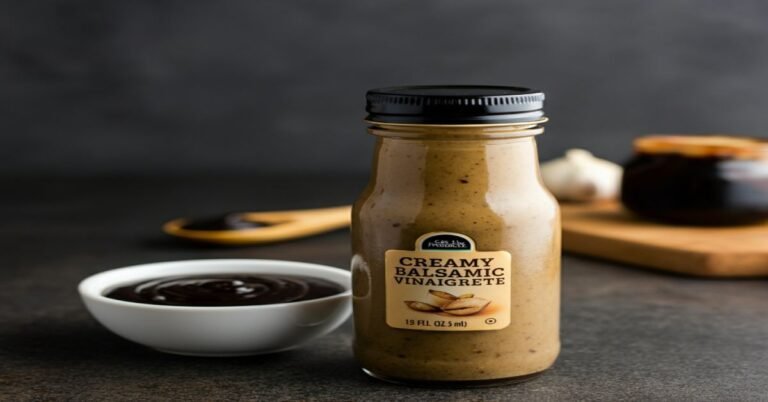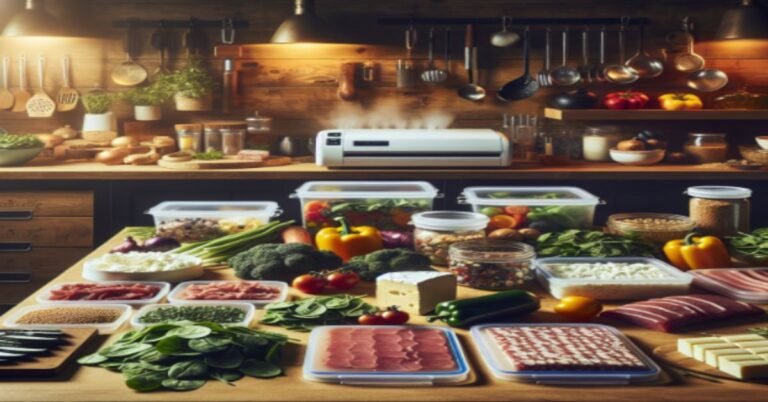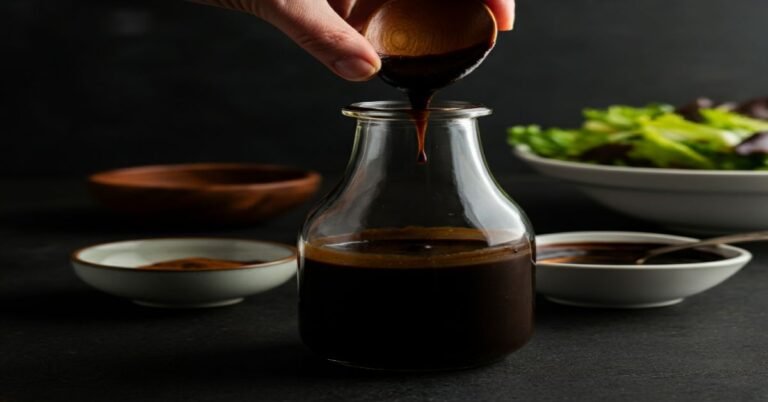How to Make the Perfect Focaccia-Style Dough
There’s something incredibly satisfying about baking your bread, especially when it’s golden, crisp on the outside, and tender within, like perfect focaccia. But achieving that signature texture and flavor at home? That’s where the magic (and technique) comes in. If you’ve ever wondered how to make the perfect focaccia-style dough from scratch, you’re not alone. Whether you’re prepping for a cozy dinner, crafting an artisan-style sandwich base, or simply want to elevate your bread-baking skills, this guide is for you.
In this post, we’ll walk you through every step of the process—from selecting the right flour to nailing the fermentation stage. You’ll learn the art of achieving those signature airy pockets, the importance of olive oil, and pro tips for getting that golden, chewy crust. This isn’t just any bread—focaccia is a canvas for flavor and creativity. So roll up your sleeves, preheat that oven, and let’s bring a little rustic Italian charm into your kitchen.
Key Ingredients for Perfect Focaccia
High-quality olive oil
The cornerstone of perfect focaccia is high-quality olive oil. It not only enhances the flavor but also contributes to the bread’s texture. For the best results, use extra-virgin olive oil, which imparts a rich, fruity taste to the dough. Some recipes suggest infusing the oil with garlic, thyme, and rosemary to elevate the flavor profile even further.
All-purpose or bread flour
The choice of flour is crucial for achieving the ideal focaccia texture. Both all-purpose and bread flour can be used, with each offering slightly different results:
| Flour Type | Characteristics |
|---|---|
| All-purpose | Versatile, produces a softer crumb |
| Bread flour | Higher protein content creates a chewier texture |
Whichever type you choose, accurate measurement is key to maintaining the proper hydration level, which is essential for focaccia’s signature airy structure.
Instant or active dry yeast
Yeast is the leavening agent that gives focaccia its light, airy texture. You can use either instant or active dry yeast:
- Instant yeast: Can be mixed directly with dry ingredients.
- Active dry yeast: Needs to be proofed in warm water (around 110°F) with a small amount of sugar.
Both types work well, but be sure to adjust the preparation method accordingly.
Salt and optional sweeteners
Salt is essential for flavor and helps control yeast activity. While some recipes include a small amount of sugar or honey to activate the yeast, others omit sweeteners entirely, especially for long fermentation processes where natural sugars develop over time.
Herbs and aromatics (rosemary, thyme, garlic)
To elevate your focaccia, consider incorporating herbs and aromatics:
- Rosemary: A classic choice, providing a fragrant, piney flavor.
- Thyme: Offers a subtle, earthy taste.
- Garlic: Adds a savory depth to the bread.
These can be mixed into the dough or used as toppings before baking. For an intense flavor boost, infuse them in olive oil before incorporating them into the recipe.
Now that we have covered the key ingredients for perfect focaccia, let’s move on to the next crucial step: Mastering the Dough Preparation. This stage is where these quality ingredients come together to form the foundation of your delicious homemade focaccia.
Mastering the Dough Preparation
Now that we’ve covered the key ingredients for perfect focaccia, let’s dive into mastering the dough preparation. This crucial step sets the foundation for a light, airy, and flavorful bread.
Achieving high hydration (88% water content)
High hydration is essential for creating the perfect focaccia. Aim for an 88% water content, which means using 88 grams of water for every 100 grams of flour. This high water-to-flour ratio results in:
- A lighter, airier crumb.
- Deep, characteristic dimples.
- A moist, pillowy texture.
To achieve this hydration level:
- Measure ingredients precisely.
- Add water gradually while mixing.
- Be patient as the dough comes together.
Proper yeast activation techniques
For optimal yeast activation:
- Use warm water (around body temperature).
- Avoid adding sweeteners for long fermentations.
- Allow 5-10 minutes for the yeast to bloom.
| Yeast Type | Activation Method |
|---|---|
| Instant | Mix directly with flour |
| Active Dry | Dissolve in warm water first |
Mixing and kneading methods
Proper mixing and kneading are crucial for developing gluten and incorporating air:
- Mix dry ingredients thoroughly.
- Add water gradually while stirring.
- Knead until the dough becomes smooth and elastic.
- Rest the dough to allow the gluten to relax.
Infusing oil with herbs and garlic
Enhance your focaccia’s flavor by infusing olive oil:
- Gently heat olive oil in a pan.
- Add minced garlic, rosemary, and thyme.
- Simmer on low heat for 5-10 minutes.
- Strain and cool before using.
Use this infused oil for:
- Greasing the baking pan.
- Brushing the dough before baking.
- Adding flavor during the dimpling process.
With the dough preparation mastered, we’ll next explore the importance of fermentation, which is crucial for developing complex flavors and achieving the perfect texture in your focaccia.
The Importance of Fermentation
Now that we have mastered the dough preparation, let’s delve into the crucial process of fermentation, which plays a pivotal role in creating the perfect focaccia.
A. Long cold fermentation (12-72 hours)
Cold fermentation is a game-changer for focaccia, enhancing both flavor and texture. This technique involves allowing the dough to rise slowly in the refrigerator for an extended period, typically between 12 to 72 hours. The gradual fermentation process allows yeast to break down starches, creating subtle flavor compounds that contribute to a bakery-quality focaccia.
Benefits of long, cold fermentation:
- Enhances bread flavor.
- Improves texture (softer, airier crumb).
- Develops a unique depth of flavor (mild sweetness and slight tang).
- Increases dough elasticity.
Benefits of overnight refrigeration
Overnight refrigeration is a popular method within the cold fermentation spectrum. This approach offers several advantages:
| Benefit | Description |
|---|---|
| Flexibility | Prepare the dough in advance and bake at your convenience |
| Consistency | Ensures reliable results without rushed preparation |
| Flavor development | Allows for a more complex flavor profile |
| Improved texture | Results in a chewier, more satisfying bread |
Room temperature rise alternatives
While cold fermentation is preferred for its flavor-enhancing properties, room temperature rise is an alternative for those short on time. Here’s a comparison:
| Aspect | Cold Fermentation | Room Temperature Rise |
|---|---|---|
| Duration | 12-72 hours | 1.5-2 hours |
| Flavor complexity | High | Moderate |
| Texture | Airier, chewier | Standard |
| Convenience | Prepare in advance | Quicker process |
Enhancing flavor through slow fermentation
Slow fermentation is key to developing the rich, complex flavors that set artisanal focaccia apart. During this process:
- Yeast breaks down starches into simpler sugars.
- Enzymes work to modify proteins and starches.
- Bacteria produce organic acids, contributing to the subtle tangy flavor.
To maximize flavor development:
- Use high-quality bread flour for its higher protein content.
- Adjust fermentation time based on personal preference (longer for more complex flavors).
- Maintain proper dough hydration throughout the process.
With this newfound understanding of fermentation’s importance, we’ll next explore the crucial steps of shaping and resting the dough, which will further contribute to achieving that perfect focaccia texture and appearance.
Shaping and Resting the Dough
Now that we’ve explored the importance of fermentation in creating the perfect focaccia dough, let’s move on to the crucial steps of shaping and resting the dough.
Transferring to a baking pan
When transferring your fermented focaccia dough to the baking pan, gentle handling is key. Choose a shallow, well-oiled pan to ensure an even rise and prevent sticking. Carefully stretch the dough from the edges, preserving the air pockets that have developed during fermentation. This technique helps maintain the light and airy texture characteristic of excellent focaccia.
Creating the signature dimples
After transferring the dough, it’s time to create those iconic focaccia dimples:
- Allow the dough to rest for about 2 hours in the pan.
- Use your fingertips to gently press into the dough, creating evenly spaced indentations.
- Drizzle generously with olive oil, allowing it to pool in the dimples.
- Add your chosen toppings, such as garlic cloves, sliced red onion, or fresh rosemary.
Second rise techniques
The second rise is crucial for developing flavor and texture:
| Technique | Duration | Benefits |
|---|---|---|
| Room temperature | 2 hours | Quicker process, suitable for same-day baking |
| Refrigerated | 9-14 hours | Enhanced flavor, improved texture, convenient for overnight prep |
Choose the technique that best fits your schedule and desired outcome. Remember, patience during this stage contributes significantly to the final product’s quality.
Preventing crust formation
To prevent unwanted crust formation during the resting period:
- Cover the dough with a damp cloth or plastic wrap.
- Ensure the cover doesn’t touch the dough surface.
- Keep the dough in a draft-free area to maintain a consistent temperature.
This step is crucial for maintaining the dough’s moisture and allowing it to rise properly without developing a dry outer layer.
With the dough now shaped, dimpled, and rested, we’re ready to move on to the next exciting stage: baking the perfect focaccia. The preparation we’ve done in this shaping and resting phase will significantly influence the bread’s final texture and flavor profile, setting the stage for a truly delicious homemade focaccia.
You may also like –
- creamy balsamic vinaigrette
- creamy balsamic dressing recipe
- pesto recipe with walnuts
- squash pasta sauce
- Butternut squash sauce
- mushroom alfredo sauce
Baking the Perfect Focaccia
Now that we’ve shaped and rested our focaccia dough, it’s time to move on to the exciting part – baking the perfect focaccia. Let’s dive into the key aspects of achieving that golden-brown, aromatic Italian flatbread we all love.
Optimal oven temperature and timing
For the perfect focaccia, preheat your oven to 425°F (220°C). This high temperature ensures a crispy exterior while maintaining a soft, airy interior. Bake your focaccia for 20-25 minutes, keeping a close eye on it as it approaches the 20-minute mark.
| Oven Type | Temperature | Baking Time |
|---|---|---|
| Standard | 425°F (220°C) | 20-25 minutes |
| Convection | 400°F (200°C) | 18-22 minutes |
Pro tip: Using a baking stone or steel can enhance the texture by mimicking the heat distribution of traditional brick ovens.
Adding toppings before baking
Before sliding your focaccia into the oven, it’s time to add those classic toppings that make it irresistible:
- Drizzle generously with high-quality extra-virgin olive oil
- Sprinkle coarse sea salt for that characteristic salty crunch
- Add fresh rosemary leaves or other herbs of your choice
- Consider additional toppings like:
- Olives.
- Cherry tomatoes.
- Thinly sliced onions.
Remember, the dimples you created earlier will help capture these flavorful additions, infusing the bread with delicious taste and aroma.
Achieving golden-brown perfection
To ensure your focaccia reaches that picture-perfect golden-brown state:
- Position the rack in the middle of the oven for even heat distribution
- Rotate the pan halfway through baking if your oven has hot spots
- Look for these signs of doneness:
- A golden-brown top.
- A hollow sound when tapped.
- A glossy sheen from the olive oil.
Post-bake enhancements (garlic butter)
While traditional focaccia is delicious on its own, you can elevate it further with post-bake enhancements:
- Brush the hot focaccia with garlic-infused olive oil.
- Sprinkle with grated Parmesan cheese immediately after baking.
- Add a drizzle of honey for a sweet contrast to the savory flavors.
With your perfectly baked focaccia now ready, we’ll move on to serving and storage tips to ensure you can enjoy your homemade Italian bread at its best.
Serving and Storage Tips
Now that we’ve mastered the art of baking the perfect focaccia, let’s explore how to serve and store this delicious Italian bread to maintain its quality and versatility.
Versatile serving suggestions
Focaccia’s versatility shines through various serving options:
- Dip in coffee for a traditional Italian breakfast experience.
- Create sandwiches with fillings like prosciutto or tomatoes.
- Serve as a side dish to complement Italian meals.
- Use as a base for focaccia pizza.
Proper cooling and slicing techniques
To preserve the bread’s texture and flavor:
- Allow the focaccia to cool completely before slicing.
- Use a sharp knife for clean cuts.
- If serving immediately, slice while still warm for a delightful aroma.
Room temperature and freezer storage
| Storage Method | Duration | Technique |
|---|---|---|
| Room Temperature | 2-3 days | Wrap in plastic wrap or beeswax wrap, and store in an airtight container |
| Refrigerator | Up to 5 days | Tightly wrap in plastic wrap, and place in a sealed container |
| Freezer | Up to 3 months | Slice, wrap each piece in plastic wrap and aluminum foil, and store in a freezer-safe bag |
For room temperature storage, keep the focaccia away from direct sunlight and temperature fluctuations. Add a damp paper towel inside the container to prevent drying.
Reheating methods for best results
To restore the focaccia’s texture and flavor:
- Oven method: Preheat to 350°F, reheat for 8-10 minutes.
- Toaster: Ideal for quick reheating of individual slices.
- Brush with olive oil before reheating for added moisture and flavor.
For frozen focaccia, thaw at room temperature for about an hour before reheating.
With these serving and storage tips, you can enjoy your homemade focaccia for days to come. Next, we’ll explore various adaptations and variations to elevate your focaccia-making skills even further.
Variations and Adaptations
Now that we’ve covered how to serve and store your focaccia, let’s explore some exciting variations and adaptations to elevate your bread-making game.
Quick same-day focaccia recipe
For those times when you’re craving fresh focaccia but don’t have the luxury of an overnight fermentation, try this quick, same-day recipe:
- Use the Focaccia Genovese dough recipe.
- Reduce the rising time to 2-3 hours in a warm environment.
- Proceed with shaping and topping as usual.
- Bake at 450°F (232°C) for 20-25 minutes until golden brown.
This method sacrifices some flavor complexity but still yields a delicious homemade focaccia.
Experimenting with different pan sizes
Focaccia’s versatility extends to its shape and thickness. Here’s a quick guide to adjusting your recipe for various pan sizes:
| Pan Size | Dough Amount | Baking Time |
|---|---|---|
| 9×13 inch | Standard recipe | 20-25 minutes |
| 8×8 inch | 2/3 of the recipe | 18-22 minutes |
| 12-inch round | Standard recipe | 22-27 minutes |
Remember to adjust toppings proportionally and keep an eye on baking times, as thinner focaccia will cook faster.
Creating focaccia art
Transform your focaccia into a canvas with these creative topping ideas:
- Garlic Rosemary Herb: Arrange fresh rosemary sprigs and thinly sliced garlic
- Spring Focaccia: Create a floral design with lemon slices and asparagus spears
- Mediterranean-inspired: Pattern tomatoes, olives, and feta cheese
For best results, slice raw toppings thinly to ensure even cooking and beautiful presentation.
Transforming into focaccia pizza or sandwiches
Elevate your focaccia into a meal with these transformative ideas:
Focaccia Pizza:
-
- Top cooled focaccia with pizza sauce, cheese, and favorite toppings
- Broil until cheese melts for a quick, delicious meal
Focaccia Sandwiches:
-
- Slice the cooled focaccia horizontally
- Fill with Italian meats, cheeses, and vegetables
- Press and grill for a panini-style sandwich
These variations showcase focaccia’s adaptability, making it perfect for appetizers, breakfasts, or dinner sides. Remember, the key to perfect focaccia lies in quality ingredients, proper fermentation, and creative experimentation with toppings and techniques.
Mastering the art of focaccia-style dough is a rewarding culinary journey. From selecting high-quality ingredients like olive oil and herbs to understanding the importance of hydration and fermentation, each step contributes to creating the perfect texture and flavor. Whether you opt for a long, cold fermentation or a quicker same-day method, the key lies in patience and attention to detail during the preparation, shaping, and baking processes.
Now that you’re equipped with the knowledge to create delicious focaccia, it’s time to put your skills to the test. Experiment with different toppings, try various pan sizes, or even create focaccia art. Remember, practice makes perfect, and each batch you make will bring you closer to achieving that golden, pillowy bread with deep dimples and a light, airy crumb. So, preheat your oven, roll up your sleeves, and embark on your focaccia-making adventure – your taste buds will thank you!








